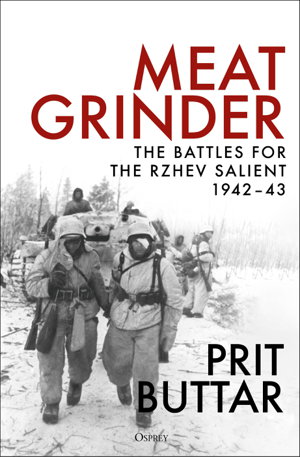
PublishedBloomsbury, January 2023 |
ISBN9781472851819 |
FormatHardcover, 464 pages |
Dimensions23.4cm × 15.3cm |
The Soviet counteroffensive in late 1941 drove the Wehrmacht back from the outskirts of Moscow, inflicting the first serious setback suffered by the Germans in the war. But the counteroffensive, intended to destroy the Wehrmacht divisions and thus pave the way for a swift Soviet victory, gradually petered out as casualties, German resistance, and organisational and logistic difficulties brought the Red Army to a halt.
The result was a convoluted front line, with a large salient projecting north from Vyasma to Rzhev. For the Germans, this represented a jumping-off point for a future renewed drive on Moscow, and the Red Army was therefore anxious to destroy the salient. As is often the case in protracted struggles, the importance of victory in the battles that followed assumed a disproportionate importance.
The Red Army launched four major offensives against the salient, all of which were defeated with heavy losses, exceeding two million killed, wounded or missing. Eventually, the Germans evacuated the salient in March 1943, but the fighting had left them with over half a million casualties. The battles saw Walter Model establish his reputation for determined defensive warfare, an attribute that Hitler grew to value as vital if defeat was to be avoided; largely due to his successes in and around the salient, Model was dispatched by Hitler to one sector after another through 1944 in attempts to prevent the Eastern Front from collapsing.
After the war, orthodox Soviet historiography pointedly avoided acknowledging the failure of Red Army offensives against the Rzhev Salient. One operation in particular, codenamed Mars, coincided with the encirclement of the German Sixth Army in Stalingrad and actually involved far more Soviet troops than the fighting in the south; the few mentions of the operation in Soviet accounts attempted to portray it as a successful attempt to tie down German forces in the central sector while the blow against Stalingrad was struck, and it is only very recently that the magnitude of the Soviet defeat has become better known. For the Germans who fought through this battle, the salient became known as the 'Meat Grinder'. However, the Red Army learned from its failures to breach the German defensive lines, and analysis of these failures, combined with detailed study of the German defences after the final German evacuation of the salient, helped pave the way for the Soviet victory against Army Group Centre in Operation Bagration in the summer of 1944 leaving the road to Berlin clear.

